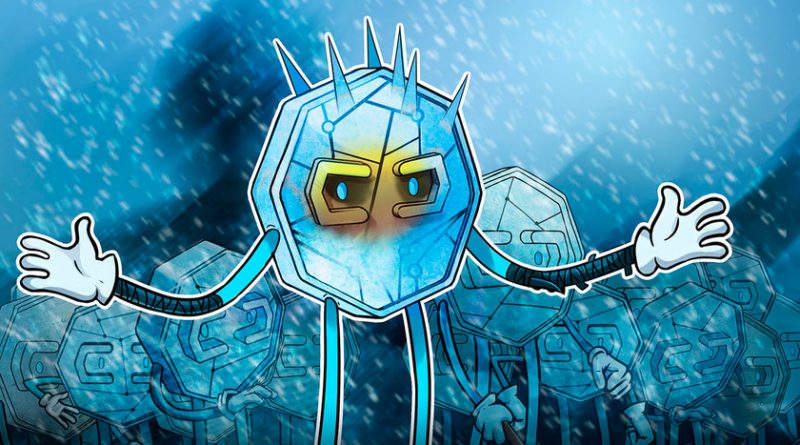The cryptocurrency sector is overflowing with dead projects
Blockchain technology is just a tool that solves a problem, it cannot be the goal of the entire project.
In 2017, when everything concerned with cryptocurrency and blockchain still looked fresh and interesting, it seemed that there would be no day without a new “revolutionary” project or idea. Decentralized financial system, decentralized torrent tracker, decentralized office documentation system. Decentralized, decentralized, decentralized.
The overuse of terms like “transparent,” “distributed” and “blockchain-based” soon made most press papers look generic. The closer we got to the peak of the Bitcoin price at the end of 2017, the more absurd the names of new projects became: “Ethereum-based payment system for slaughterhouse industry workers,” “decentralized blockchain-based dwarf horse breeding platform,” “peer-to-peer personal banking service for divorced blind people,” and so on.
Who would ever need any of that, one might ask. Well, in many cases, nobody. Of the several thousand cryptocurrencies launched since the spread of blockchain technology, only about 30 are currently of any investment interest.
Following cryptocurrencies, many crypto exchanges launched on the wave of blockchain popularity are dying — they just have nothing to trade anymore. The situation is especially visible on review platforms, which store cards of hundreds of closed projects, often together with angry user reviews.
Let’s take a look at a few projects and analyze the reasons for their failure.
Telegram Open Network, or TON
In late 2017 to early 2018, it was first reported that Telegram was planning to launch its own blockchain platform and native cryptocurrency.
Also known as Grams, the TON coins were intended to be based on Telegram Open Network, with the TON blockchain at the core of the platform. In the project white paper, the developers presented this future coin as a potential standard cryptocurrency that could be used for the regular exchange of value in daily life.
It was stated that while Bitcoin (BTC) was considered “digital gold” and Ethereum was a platform for token crowd sales, this new TON cryptocurrency would be a substitute for traditional money and traditional payment systems such as Visa and Mastercard. According to the white paper, other cryptocurrencies lacked the qualities required to attract a mass consumer. In its turn, Telegram would be able to implement a system eligible for mass use, given its expertise in encrypted distributed data storage, experience in creating user-friendly interfaces, and an enormous user base.
While the company did have a point in part of its claims, to me all of it looked like a huge PR campaign. Why should Telegram implement this new financial system and not some corporation with experience in the financial services industry? How would it be able to distinguish this new currency from other, similar products? How would it be any better than traditional financial systems being implemented by a large centralized company?
No answers were given. However, the Telegram initial coin offering, launched in 2018, was a huge success. The company was able to raise $1.7 billion from investor funds in two private token sale rounds, and that was really promising.
Related: Exclusive: New report reveals details of Telegram’s TON blockchain
But it didn’t end well. On May 12, 2020, Pavel Durov announced that Telegram would officially terminate its involvement with the project after a long legal battle with the United States Securities and Exchange Commission. Surely, the company didn’t have the legal resources necessary for implementing such an ambitious idea. Most likely, technical difficulties and strong competition on the market also played a role.
Related: SEC vs. Telegram: Part 1 — Key takeaways for now
For me, this case epitomizes the whole cryptocurrency hysteria of 2018 — a company that gets involved in an enterprise for which it is not ready, either legally or technologically, without a clear positioning of the product. The end result is failure.
Petchains
Petchains was presented as the future global information management system and trading platform for the pet market. According to its press papers, the system would allow its users to maintain and keep data of the animals living in homes and shelters. The presented project goal was to create a community of pet owners, experts, professionals, institutions, service providers and volunteers. The system was intended to be developed using blockchain and big data technologies as usual. The initial funding was going to be gathered through the process of an initial coin offering.
It’s a good question if the world really needs a blockchain-based information and trading platform for the pet market. I wouldn’t say there are many problems with over-centralization there. Pet shops are usually chosen by customers after analyzing brand reputation and online presence.
Some problems that customers on this market may face include unreliable information about the acquired animal’s health or previous owners. However, these difficulties comprise not a technical, but a legal problem that is unlikely to be solved using blockchain technology.
Moreover, since animal welfare laws vary between different countries, creating a unified international platform in this field is a legally challenging task, hardly suitable for a small technological startup.
The Petchain project team consisted mainly of no-names who had no proven experience in any serious projects. It was not even possible to say for sure whether these were real people — some of the project advisors turned out to have been presented with fake photos.
Despite some marketing efforts, no serious funding was attracted to the project. At the moment, the official website of the project is inactive and its social media accounts haven’t been updated for more than a year. The link that used to lead to the project’s white paper now contains a text describing in general terms the reasons for failures in the cryptocurrency industry.
Wiki token
One more dead project with an incoherent, not thought-through idea at the base of it.
Wiki token (WIKI) was an Ethereum-based, ERC-20 compatible token designed to be used as a means of payment at the so-called Crypto University. This future platform, built around the Bitcoin Wiki project, was described as a totally independent, decentralized, censorship-free educational system.
The learning courses for Crypto University were meant to be created by members of the project community. For writing articles and creating courses, these members would get the previously mentioned ERC-20 Wiki tokens. These tokens would be listed on various crypto exchanges and could be spent on other Crypto University courses.
I first noticed this project in 2018, and it didn’t make much sense right from the beginning. First of all, what kind of secret knowledge is there in the cryptocurrency industry that it should be distributed using token-based payment systems? How would it compete with other content, available for free?
Theoretically, it’s possible to create a platform similar to Coursera based on blockchain. Crypto University, like Coursera, could become a platform that brings together creators and consumers of educational materials. But here, some difficulties arise.
The value of an educational product is usually based on the reputation of its creators. Most of the courses at Coursera are university education programs created by well-known, highly reputable institutions. These courses include interaction with a teacher, who is also a well-known education professional. Upon completion of a course, students usually receive certificates recognized by companies and educational institutions. All these factors add up to the value of the course, and it’s thanks to them that people are willing to pay for it.
In its turn, the Wiki token project could hardly offer any of the above. No collaboration with large institutions or renowned educators. Moreover, the highly specialized area of expertise (cryptocurrency and blockchain) chosen did not imply the presence of educational professionals who could potentially create valuable educational content. Why would it be any better than free YouTube videos or easily searchable internet articles?
What we see here is just another technical embodiment of a dubious business idea. Having neither a well-thought-out concept nor a product, the team rushed to implement it using fashionable technology. The result is a technical wrapper with no content and no interest outside of blockchain hysteria.
As of October 2020, the project’s website is no longer available and its social media accounts have been dead for a couple of years.
Conclusions
The projects listed above did not in fact offer anything except technical execution that was fashionable at the time. Hastily launched on the wave of blockchain popularity, with no market or audience research, they were unable to offer any meaningful value to a potential customer.
One of the key marketing rules: Sell the problem to be solved, not the product you offer. Product developers should always think about consumer needs first. Otherwise, they risk ending up in the same way as the developers of the projects mentioned above — creating only product packaging that has no intrinsic value.
The views, thoughts and opinions expressed here are the author’s alone and do not necessarily reflect or represent the views and opinions of Cointelegraph.




